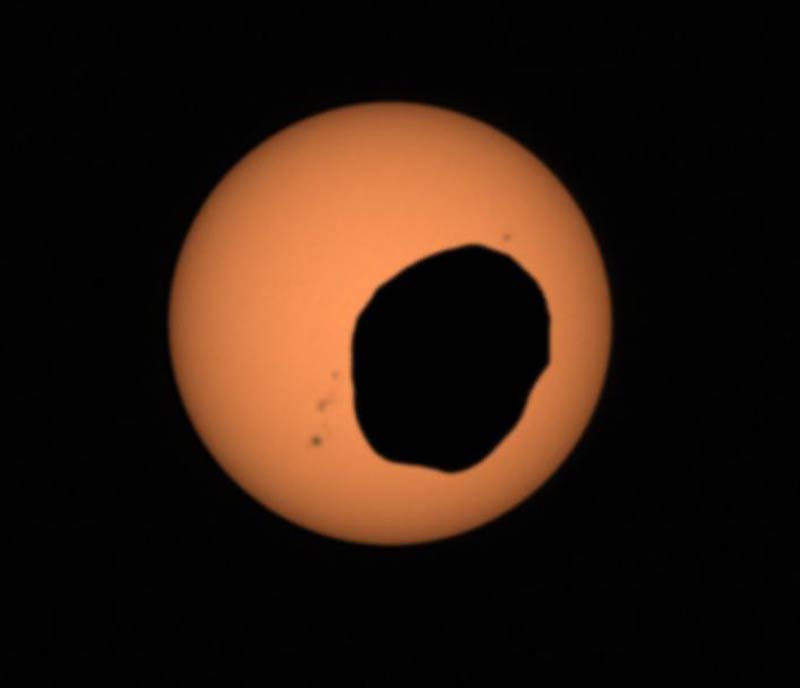Phobos, one of the two enigmatic moons of Mars, has long captivated astronomers and space enthusiasts with its peculiar characteristics. However, its fate has been sealed from the moment of its formation. Scientists have predicted that Phobos, the larger and closer moon to Mars, is destined to meet its ultimate demise by crashing into the Red Planet. This cosmic dance of destruction, though inevitable, promises to be a breathtaking spectacle, unfolding over millions of years.
 Image credit: NASA/JPL-Caltech/ASU/MSSS/SSI
Image credit: NASA/JPL-Caltech/ASU/MSSS/SSI
Phobos – A Mysterious Moon
Discovered in 1877 by American astronomer Asaph Hall, Phobos has intrigued scientists ever since. It orbits Mars at an incredibly close distance of about 3,700 miles (6,000 kilometers) above its surface, making it the closest moon to its host planet in our solar system. With a diameter of only about 14 miles (22 kilometers), Phobos is irregularly shaped and covered with craters, indicating a tumultuous past. Its reddish color and heavily pockmarked surface suggest a composition rich in carbonaceous material and a history of intense impacts.
The End is Inevitable
Phobos, like any other moon, is subject to gravitational forces. As it orbits Mars at such close proximity, these forces create tidal interactions, resulting in a slow but relentless descent towards the planet. The tidal forces are causing Phobos to lose altitude at an estimated rate of 1.8 meters per century.
Scientifically speaking, Phobos is doomed. Its fate was sealed from the moment it formed. Over millions of years, it will continue to draw nearer to Mars until, eventually, it collides with its host planet. The collision is not expected to happen anytime soon, but its inevitability is a reminder of the dynamic and ever-changing nature of celestial bodies.
Spectacular Showdown
The collision of Phobos with Mars will undoubtedly be a mesmerizing event, but its exact implications are a matter of debate among scientists. The size and composition of Phobos will determine the extent of the impact and the aftermath of the crash. Some experts believe that the moon will break apart upon entering Mars’ atmosphere, creating a brilliant display of fiery meteorites streaking across the sky.
Others postulate that Phobos, due to its relatively small size, may disintegrate entirely before reaching the Martian surface. This would result in a ring-like structure around Mars, similar to the rings of Saturn, composed of Phobos’ remnants.
Scientific Insights and Discoveries
The collision of Phobos with Mars presents a unique opportunity for scientists to gain valuable insights into planetary formation and dynamics. Observing this celestial event will help astronomers understand the process by which moons are born, evolve, and ultimately meet their fate.
Furthermore, the debris scattered by the impact may provide clues about the composition of Phobos, offering a chance to study materials that are otherwise challenging to access. Analyzing these fragments could deepen our understanding of Mars’ geological history and potentially shed light on the possibility of life on the Red Planet.
The impending collision of Phobos with Mars is an awe-inspiring reminder of the continuous interplay between celestial bodies in our solar system. As we marvel at this cosmic spectacle, we gain insights into the intricate dance of celestial objects and their eventual destiny. While the collision of Phobos is still far in the future, its inevitability highlights the ephemeral nature of all cosmic phenomena and the impermanence of even the most distant and mysterious moons in our cosmic neighborhood. As scientists eagerly await this stunning event, the world will be captivated by the grand finale of Phobos’ journey, ending in a breathtaking display of celestial majesty.
